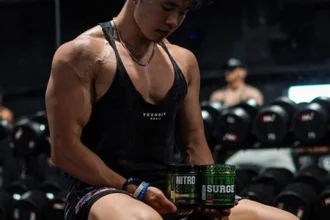On the streets and in training halls across Chicago, Elite Self-Defense Experts instructors and tactical coaches increasingly rely on extreme fitness methods to create bodies that are powerful, resilient, and ready for real-world stress. This article explains why top practitioners favor intensified, functional training — and points you to local Chicago resources, classes, and map locations so you can explore these approaches safely.
What “extreme fitness” means for self-defense pros
For elite self-defense professionals, “extreme fitness” isn’t about danger for its own sake — it’s about training intensity, functional movement, and scenario-based conditioning that prepares the body and mind for unpredictable, high-stress encounters. Programs blend strength, explosive power, conditioned endurance, mobility, and high-pressure decision-making drills to build real-world capability rather than gym-only aesthetics.
Why tactical experts prioritize durability and power
Durability (injury-resistance), maximal strength and short-burst power are crucial in close-quarters confrontations. Coaches report that athletes who combine heavy compound lifts, plyometrics, and interval conditioning recover faster, absorb impacts more safely, and sustain high-force actions under fatigue — attributes valued by instructors teaching law enforcement, private security, and civilian self-defense.

Chicago training hubs where extreme fitness meets self-defense
Chicago hosts a vibrant network of martial and tactical schools that pair combatives with high-intensity training. Krav Maga and elite force programs emphasize real-world control tactics and scenario training, while Brazilian Jiu-Jitsu schools add ground-control conditioning that translates into practical resilience. Notable local providers include Krav Maga Force (West Loop / Chicago area) and established BJJ academies such as Gracie Barra Chicago. :contentReference[oaicite:0]{index=0}
Explore Krav Maga Force for force-training programs and law-enforcement courses, and Gracie Barra Chicago for BJJ-focused conditioning and self-defense skills. Links: Krav Maga Force, Gracie Barra Chicago.
How elite instructors combine skill work with extreme conditioning
Top coaches layer technical repetitions (strikes, escapes, weapon retention drills) on top of a base of functional strength and metabolic conditioning. This means sessions alternate heavy compound lifts or loaded carries with short, high-intensity intervals and scenario practice so trainees can execute techniques while breathing hard and thinking clearly — exactly what real confrontations demand.
Time-efficient modalities popular in Chicago
New fitness modalities such as EMS (electrical muscle stimulation) and short, coach-led intense sessions are also gaining traction as time-efficient ways to recruit muscle and build strength without hours in the gym. Several Illinois studios offer EMS and compressed strength formats that many tactical athletes use for supplemental conditioning. :contentReference[oaicite:1]{index=1}
Law enforcement training & the reality of force work
Police and tactical units emphasize control tactics, scenario training, and fitness standards; Chicago’s Education & Training Division includes physical and scenario-based training in cadet curricula. While municipal training programs are evolving, many private tactical coaches provide advanced force-training modules that stress safety, legal considerations, and de-escalation alongside physical preparedness. :contentReference[oaicite:2]{index=2}
Safety first: how to train extreme without getting hurt
“Extreme” should never mean reckless. Progressive overload, movement screening, professional coaching, structured rest, and regular mobility work reduce injury risk. Elite instructors recommend a staged approach: establish baseline movement quality, add load and speed gradually, and use protective progressions (e.g., tempo work, controlled plyos) before full-intensity scenario drills.
Programming example: balance of strength, power, and capacity
A typical week for a battle-tested trainee might include: two heavy compound strength sessions (squats/deadlifts/press variations), two high-intensity metabolic or interval sessions (sprints, sleds, circuits), one skill/technical session (martial art drilling under fatigue), and daily mobility/recovery practices. This blend produces functional force while maintaining movement quality.
Where to train in Chicago — suggested map locations
Here are practical anchors to explore local training: Confluence of the West Loop for Krav Maga Force sessions; West Loop / West Town neighborhoods for several MMA & BJJ gyms; and multiple EMS/fast-strength studios around the city for time-efficient conditioning. Use these search links to find nearby classes and schedules. :contentReference[oaicite:3]{index=3}
Embedded map (centered on Chicago) — use this to locate gyms, parks, and training centers: https://www.google.com/maps/embed?pb=!1m18!1m12!1m3!1d2968.601029785627!2d-87.6401545845401!3d41.88183297922133!2m3!1f0!2f0!3f0!3m2!1i1024!2i768!4f13.1!3m3!1m2!1s0x880e2cbb2b1a6eed%3A0x4bfa6b0f6f2f6a70!2sChicago%2C%20IL!5e0!3m2!1sen!2sus!4v1696111111111
Recovery, nutrition, and resilience
High-intensity training demands deliberate recovery: sleep, targeted nutrition, hydration, soft-tissue work, and active recovery days. Tactical athletes often use contrast therapies, targeted massage, and mobility protocols to stay ready. Local recovery and wellness centers in Chicago advertise services that complement extreme training formats. :contentReference[oaicite:4]{index=4}
Choosing the right program for your goals
If your aim is practical self-defense readiness, look for programs that combine technical training with measured physical conditioning — not just “fight camp” spectacle. Ask providers about coach credentials, injury-prevention protocols, and how they integrate decision-making and de-escalation into practice.
Links & local resources
External resources: Krav Maga Force (self-defense & force training) — kmfchicago.com; Gracie Barra Chicago (BJJ & resilience training) — graciebarrachicago.com; EMS / time-efficient conditioning studios (local searches list nearby providers). :contentReference[oaicite:5]{index=5}
Internal resources: visit our iHOXI Workouts collection for printable programming and iHOXI Contact for custom coaching requests.
Final thoughts — train smart, train realistic
Elite self-defense experts in Chicago swear by intense, functional training because it produces bodies that perform under pressure. If you’re drawn to extreme training, start with a coached, progressive plan that balances power, capacity, and recovery — and always prioritize safety and legal/ethical considerations when practicing force techniques. Want a printable, Chicago-adapted starter plan with nearby gym pins? Tell us which neighborhoods and we’ll build it for your iHOXI page.
Selected references: Krav Maga Force training programs and law enforcement modules; Gracie Barra Chicago BJJ program listings; EMS and compressed-training studios in Chicago; Chicago Police Department Education & Training Division and policy documents on training. :contentReference[oaicite:6]{index=6}
Extreme Fitness: The Backbone of Battle-Tested Bodies
Extreme fitness training is at the heart of building battle-tested bodies. It goes beyond conventional workouts by combining high-intensity strength training, explosive movements, and endurance challenges that mimic real-world scenarios. This type of training develops physical toughness, mental resilience, and adaptability, all of which are essential for elite self-defense practitioners in Chicago.
Functional Strength: Power That Translates to Real-Life Defense
Unlike traditional bodybuilding routines, functional strength training focuses on movements that improve the way the body performs in practical situations. From grappling and striking drills to carrying weight under fatigue, every exercise is designed to enhance performance in actual defensive encounters. This approach ensures that strength gains are directly applicable outside the gym.
High-Intensity Interval Training for Tactical Readiness
High-Intensity Interval Training (HIIT) is a cornerstone of extreme fitness for self-defense experts. Short bursts of maximal effort followed by brief rest periods train the cardiovascular system and enhance muscular endurance simultaneously. Chicago-based instructors integrate HIIT with scenario-based drills to simulate stress and fatigue, preparing trainees for high-pressure encounters.
Core Conditioning: Stability Under Pressure
Core strength is essential for balance, coordination, and injury prevention. In elite self-defense programs, core conditioning goes beyond sit-ups; it includes rotational movements, planks, anti-extension exercises, and weighted carries. This ensures practitioners maintain control and stability during dynamic defensive maneuvers.
Mobility and Flexibility: Preventing Injuries and Enhancing Performance
Extreme training without proper mobility can lead to injuries. Top Chicago trainers incorporate dynamic stretching, joint mobility drills, and yoga-inspired flows to increase range of motion. Enhanced mobility not only reduces injury risk but also improves the execution of complex defensive techniques, allowing for faster, more efficient movements.
Mental Toughness: The Unseen Component of Training
Physical conditioning is only part of the equation. Mental toughness is cultivated through controlled stress exposure, high-pressure drills, and scenario simulations. Elite instructors emphasize visualization, focus under fatigue, and decision-making under pressure, ensuring that students remain calm and effective in real-world situations.
Chicago Training Hubs: Where Extreme Fitness Meets Self-Defense
Chicago is home to numerous gyms and academies specializing in tactical and self-defense training. Locations such as Krav Maga Force and Gracie Barra Chicago provide structured programs that combine technical skills with high-intensity conditioning. Each facility offers unique training environments, from mat-based grappling to open-air circuit sessions, helping trainees apply extreme fitness in realistic settings.
Recovery Strategies for Battle-Tested Bodies
Recovery is as crucial as training itself. Proper sleep, nutrition, hydration, and active recovery techniques such as foam rolling, mobility drills, and restorative yoga are integral to sustaining extreme fitness regimens. Elite self-defense experts prioritize recovery to maintain peak performance and reduce the risk of overuse injuries during intense training cycles.
Nutrition for Elite Performance
Nutrition fuels the high demands of extreme fitness. Chicago-based athletes often focus on high-protein meals, complex carbohydrates, and healthy fats to sustain energy, support muscle repair, and optimize cognitive function. Strategic meal timing around workouts enhances endurance, strength, and recovery, enabling consistent progress in self-defense preparedness.
Time-Efficient Workouts for Busy Professionals
Extreme fitness doesn’t always require hours in the gym. Many programs are designed for efficiency, using circuit training, EMOM (Every Minute on the Minute) sets, and short, high-intensity sessions. Chicago instructors often combine skill work with conditioning in compact sessions, allowing professionals to maintain elite fitness while managing busy schedules.
Integrating Technology: Wearables and Performance Tracking
Modern self-defense programs increasingly incorporate wearable technology to monitor heart rate, track performance metrics, and analyze recovery. Devices provide feedback that helps trainees adjust intensity, track progress, and optimize training plans. This integration ensures that extreme fitness training remains data-driven and results-oriented.
Scenario-Based Drills: Bridging Fitness and Real-World Application
One defining feature of extreme training is scenario-based drills that replicate real-life confrontations. Chicago instructors use controlled simulations, partner resistance, and environmental challenges to teach application under stress. This ensures that strength, speed, and endurance gained in training directly translate to effective self-defense outcomes.
Group Training Dynamics: Motivation and Accountability
Training in groups provides motivation, camaraderie, and accountability. Classes often involve partner drills, team circuits, and competitive challenges that push individuals beyond their perceived limits. The social aspect of group extreme fitness training enhances adherence and creates a supportive environment for learning tactical skills.
Adapting Extreme Fitness for All Levels
While the term “extreme” may seem intimidating, programs are scalable to suit beginners, intermediates, and advanced practitioners. Coaches provide modifications to ensure safety and gradual progression, allowing all participants to benefit from increased strength, power, and resilience while reducing injury risk.
Outdoor Training in Chicago: Harnessing the Cityscape
Chicago’s urban environment provides unique opportunities for extreme fitness training. Parks, riverwalks, and staircases become natural gyms where bodyweight exercises, sprints, and circuit drills can be performed. Outdoor sessions not only expose trainees to variable terrain and weather but also enhance adaptability, spatial awareness, and situational readiness — crucial elements for elite self-defense preparedness.
Stair and Incline Workouts: Building Explosive Lower-Body Power
Stair climbs and hill sprints are staples for elite tactical conditioning. These exercises develop explosive leg power, cardiovascular endurance, and grip strength when combined with weighted carries. Chicago locations like the stairs at Soldier Field or the Lincoln Park hill areas are ideal for these workouts, providing a challenging and functional training environment.
Weighted Carries: Functional Strength for Real-World Scenarios
Farmer carries, sandbag drags, and kettlebell walks are essential components of extreme fitness for self-defense experts. These movements improve core stability, total-body strength, and grip endurance, preparing trainees to handle dynamic forces in real-life confrontations. Chicago gyms and outdoor spaces provide versatile environments for integrating these functional exercises into routine training.
Plyometric Drills: Speed and Power Under Pressure
Plyometric exercises such as box jumps, clap push-ups, and bounding enhance explosive power, agility, and fast-twitch muscle fiber recruitment. In combination with skill-based drills, these movements allow elite self-defense practitioners to respond rapidly and effectively in high-stress situations. Plyometric circuits can be performed indoors at tactical gyms or outdoors on safe surfaces across Chicago parks.
High-Intensity Circuits: Conditioning for Combat Situations
Circuit training that alternates strength, endurance, and skill drills is vital for developing real-world readiness. For Chicago-based self-defense experts, these circuits simulate the physical demands of confrontations while improving muscular endurance and anaerobic capacity. High-intensity circuits also enhance mental toughness by training under fatigue, making practitioners more resilient in unpredictable scenarios.
Partner Drills: Realistic Skill Application
Working with partners adds unpredictability and realism to self-defense training. Partner drills, such as controlled sparring, resistance-based grappling, and reaction exercises, teach timing, distance management, and defensive adaptability. Chicago academies often structure partner exercises in a safe, monitored environment, blending extreme fitness conditioning with skill application.
Recovery Modalities: Optimizing Performance
Recovery is a critical component of extreme fitness training. Elite self-defense practitioners in Chicago rely on modalities such as contrast baths, massage therapy, mobility routines, and sleep optimization to maintain performance. These methods reduce fatigue, prevent injury, and allow high-intensity training to be sustainable over the long term.

Breathwork and Stress Adaptation
Advanced self-defense training includes breathwork to improve stress tolerance, cardiovascular efficiency, and focus. Techniques like box breathing, diaphragmatic breathing, and high-intensity interval breath control help trainees maintain composure under pressure. Integrating these practices into Chicago extreme fitness programs ensures that mental resilience matches physical capability.
Tracking Progress: Metrics and Performance Tools
Data-driven training enhances results in extreme fitness programs. Trainees monitor heart rate, power output, and recovery metrics using wearable technology or mobile apps. Chicago gyms increasingly incorporate these tools to optimize intensity, prevent overtraining, and provide measurable improvements. Tracking performance ensures continuous progression and helps practitioners maintain peak readiness.
Integrating Martial Arts and Tactical Conditioning
Combining martial arts techniques with extreme conditioning creates a holistic approach to self-defense. Chicago practitioners blend striking, grappling, and weapon retention drills with high-intensity fitness elements such as sled pushes, rope climbs, and plyometric circuits. This integration ensures that every movement, whether technical or physical, contributes to a battle-tested body capable of performing under real-world stress.
Creating Sustainable Habits for Long-Term Success
Extreme fitness training is most effective when it becomes a consistent habit rather than a sporadic effort. Elite self-defense experts emphasize progressive overload, structured recovery, and goal-oriented programming. By creating a sustainable routine in Chicago’s gyms and outdoor spaces, trainees develop strength, endurance, and resilience that extend beyond training sessions, fostering lifelong readiness and confidence.
Frequently Asked Questions About Elite Self-Defense Experts
1. Who qualifies as Elite Self-Defense Experts?
Elite Self-Defense Experts are highly trained professionals with advanced skills in martial arts, tactical defense, and physical conditioning for real-world scenarios.
2. What kind of training do Elite Self-Defense Experts follow?
Elite Self-Defense Experts follow rigorous programs combining extreme fitness training, scenario-based drills, martial arts, and mental resilience exercises.
3. Are Elite Self-Defense Experts only for law enforcement?
No, Elite Self-Defense Experts may include civilian instructors, personal trainers, military personnel, and tactical coaches who focus on practical self-defense.
4. How can I learn from Elite Self-Defense Experts in Chicago?
You can enroll in certified courses, martial arts academies, or private coaching sessions where Elite Self-Defense Experts teach advanced self-defense and extreme fitness techniques.
5. Do Elite Self-Defense Experts recommend extreme fitness training?
Yes, Elite Self-Defense Experts rely on extreme fitness training to build strength, endurance, agility, and real-world readiness.
6. What are the benefits of following programs by Elite Self-Defense Experts?
Programs from Elite Self-Defense Experts improve physical strength, tactical awareness, mental resilience, and confidence in high-pressure situations.
7. Can beginners train with Elite Self-Defense Experts?
Yes, most Elite Self-Defense Experts offer scalable training, allowing beginners to safely progress while learning fundamental self-defense skills.
8. How often should I train under Elite Self-Defense Experts?
Training frequency varies, but Elite Self-Defense Experts generally recommend 3-5 sessions per week, combining skill work and conditioning.
9. Are programs from Elite Self-Defense Experts safe?
Yes, Elite Self-Defense Experts emphasize proper form, progressive intensity, and safety protocols to minimize risk during extreme fitness and tactical drills.
10. Can Elite Self-Defense Experts help with mental resilience?
Absolutely, Elite Self-Defense Experts integrate stress training, scenario simulations, and focus techniques to strengthen mental toughness.
11. Do Elite Self-Defense Experts offer outdoor training?
Many Elite Self-Defense Experts incorporate outdoor workouts using parks, stairs, and city landscapes to enhance functional strength and real-world readiness.

12. Are Elite Self-Defense Experts qualified to teach women and children?
Yes, certified Elite Self-Defense Experts tailor programs to various age groups and skill levels, ensuring safety and practical applicability.
13. How do Elite Self-Defense Experts measure progress?
Elite Self-Defense Experts track strength, endurance, technique proficiency, and reaction time to assess skill advancement and readiness.
14. Can Elite Self-Defense Experts customize programs?
Yes, Elite Self-Defense Experts create individualized programs based on physical ability, goals, and specific tactical needs.
15. Why do people choose to train with Elite Self-Defense Experts?
People train with Elite Self-Defense Experts to gain confidence, develop practical self-defense skills, enhance fitness, and be prepared for real-world threats.





